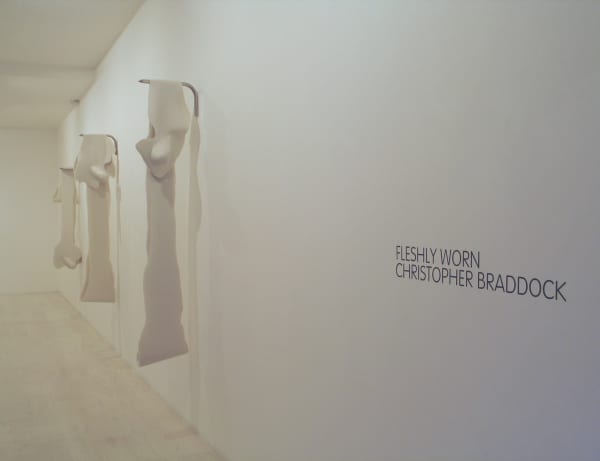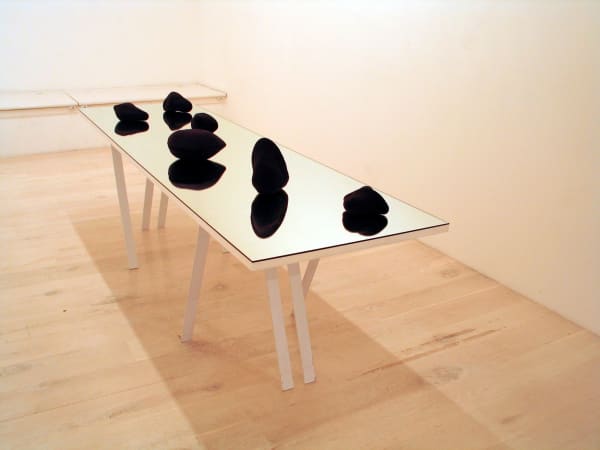Fleshly Worn: Christopher Braddock
In 2004 Christopher Braddock received the prestigious ISCP Creative New Zealand Visual Arts Residency in New York. During these four months Braddock embarked on a new series of works, entitled Fleshly Worn, forming the basis of this upcoming exhibition at Gow Langsford Gallery. In these works Braddock continues his explorations of the human body, religious symbols, and his application of the Minimalist aesthetic.
In the past Braddock has worked with a range of sculptural materials including glass, wood, tin and wire. These new works take form in silicon, which has been shaped by direct impressions of the artist’s body. Pairs of heels, knees and elbows punctuate the lengths of silicon that are draped along the gallery wall.
These fluid bodily forms hang at waist height, on structures similar to that of a bathroom handrail. For some years now Braddock has been steadily collecting bathroom fixtures, among them such objects as drains and tissue-box dispensers, which have often found their way into his oeuvre. “These objects store body products, scrub the body and wipe the body. It’s the body’s maintenance and cleansing in association with religious notions that interest me.” (Christopher Braddock, New York City, May 2004).
In the recently released publication on Braddock’s work, curator Natasha Conland discusses his religious references: “The Christian iconography….originates quite literally from public hygiene. In this case, hygiene is used as a metaphor for society’s distancing of the undesirable aspects of human behaviour. Though lovely in its form and finish, both religious and minimal, Braddock’s work cautions the viewer against sanctimonious hygiene…..In Braddock’s art we look out for the human stain, as it compels us towards faith.” (Natasha Conland in Dunedin Public Gallery, Christopher Braddock: Sanitate, 2004, p.12)
In addition to Braddock’s silicon works sits another series originating in plaster. More robust in appearance, these moulds of the artist’s buttocks, knees and elbows are paired back to back. This peculiar configuration creates a familiar yet ambiguous sensation to the viewer, questioning our preconceived perceptions of the form and mass of the human body.
Braddock is represented in numerous private and public collections including: Auckland Art Gallery Toi o Tamaki, Auckland; Te Papa Tongarewa Museum of New Zealand, Wellington; Robert McDougall Art Gallery, Christchurch; James Wallace Trust, Auckland, Chartwell Collection, Auckland; Galeria del Naviglio, Milan; Galerie Meyer, Paris and Ecole des Beaux-Arts, Paris.







